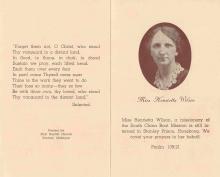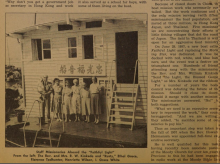South China Boat Mission > Oriental Boat Mission > International Missions > Christar.
During the 20th century a large section of the Hong Kong community, too poor to own land or property, lived in sampans on water as the ‘boat people’. Families of 7 or 8 (or more) lived in sampans 4 feet wide and 15 feet long together with chickens and ducks, dogs and cats; boats tied together in long rows with dozens and dozens of other sampans in impossible mazes on the water, in sheltered spots round Hong Kong – Shaukiwan, Causeway Bay, Aberdeen and Ap Lei Chau. The Yau Ma Tei Shelter alone on the Kowloon peninsula had an estimated population in excess of 100,000.
These were self-contained self-sufficient communities, boat cities, more dependent on the sea than the land, where everything could be found from hairdressers to sailmakers, carpenters to mechanics, restaurants and stores to theatres. They lived as a race apart, considered by land-dwelling Chinese to be the lowest of the low.
At the start of the 20th century, these were an unreached people. There were no schools in these communities, no clinics, no health or welfare centres. Adults were illiterate, unable to read or write their own language. Ignorance and superstition were rife and child mortality was high. Always on the move, in theory it was possible to be born, live and die without ever setting foot on land.
Into this in 1909 arrived a Canadian-born missionary named Florence Drew, a typist from Chicago, who had been in correspondence with an English woman in Hong Hong, Miss Mary Alexander. Miss Alexander had been touched by the plight of the boat people and written to friends in Chicago to get something done for them. These friends belonged to Ewing Street Congregational Church, Chicago, and their pastor was Rev Edward Drew, brother of Florence.
On her arrival Miss Drew was planning to work among the boat people, supported by her secretarial work and generous friends from home, and sharing the good news of Jesus Christ.
So began the South China Boat Mission. Edward Drew joined her a year later and initially the work was based in a waterside chapel. However once they purchased a boat of their own, the Morning Star, the work really took off. They made their base in Canton due to there being a much larger boat-dwelling population there.
Where the Drews had led, others followed and by 1921 there were 8 boats anchored at various spots along the Pearl /Canton River. Dispensaries drew crowds daily as people came for physical help and stayed for spiritual solace. The Chinese loved story-telling and listened with courteous interest as the good news of the Gospel was shared. In due course 40 boat churches were planted, a leprosarium established, schools founded and children educated, and boats reached as far as Wu Chow, 200 miles from Hong Kong.
In 1949 when the Communists took over China, making missionary work nigh on impossible, the work went to boat people in Hong Kong, Japan, Bankok, and the Chinese in Mauritius, and the name of the organisation changed to the Oriental Boat Mission or OBM.
In 1967 the name was changed again when the work was merged with the charity International Missions, whose base was in India and Pakistan, and in 1999 International Missions became Christar.
Today Christar has 300+ workers still seeking to serve in the least-reached parts of the globe in some 25 countries and amongst 70 different peoples.
Sources:
The Yip Family of Amah Rock by Jill Doggett
Let My Heart be Broken by Richard Gehman
Christar.ca with a pic of Florence Drew

